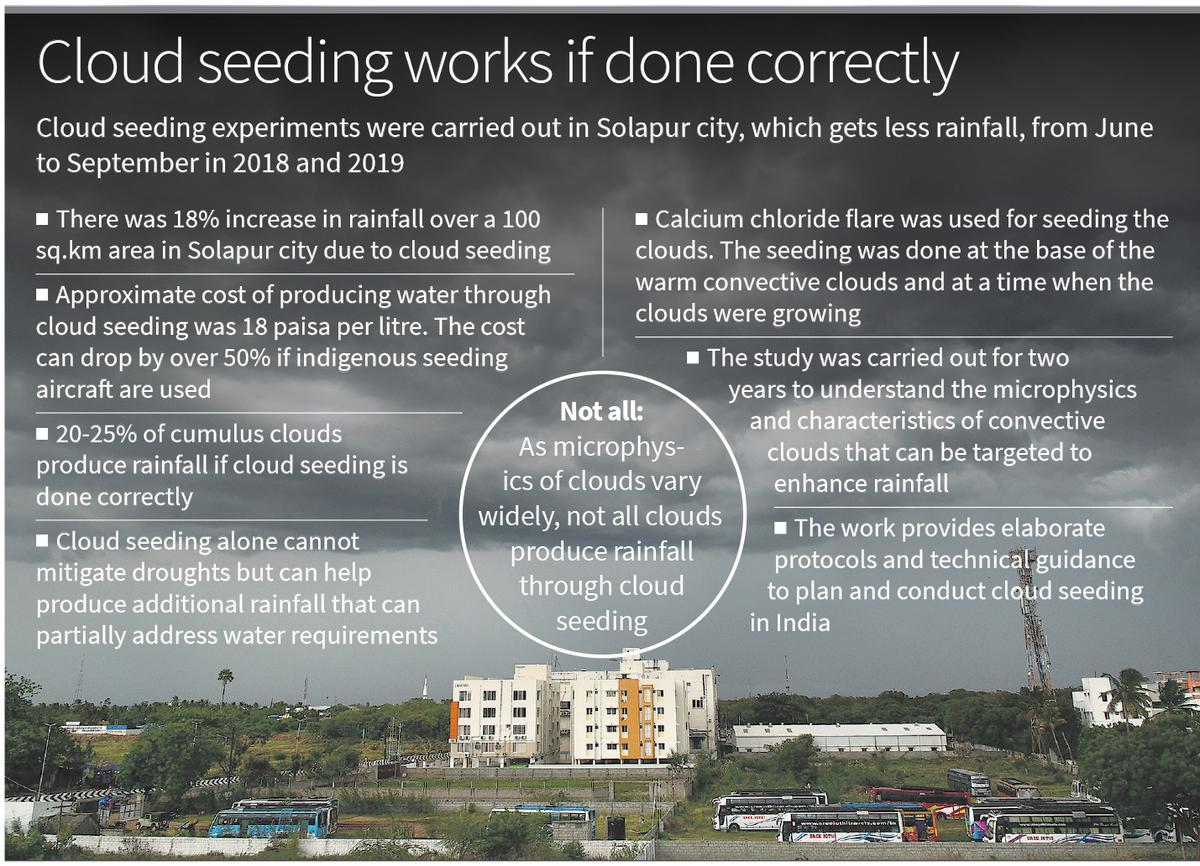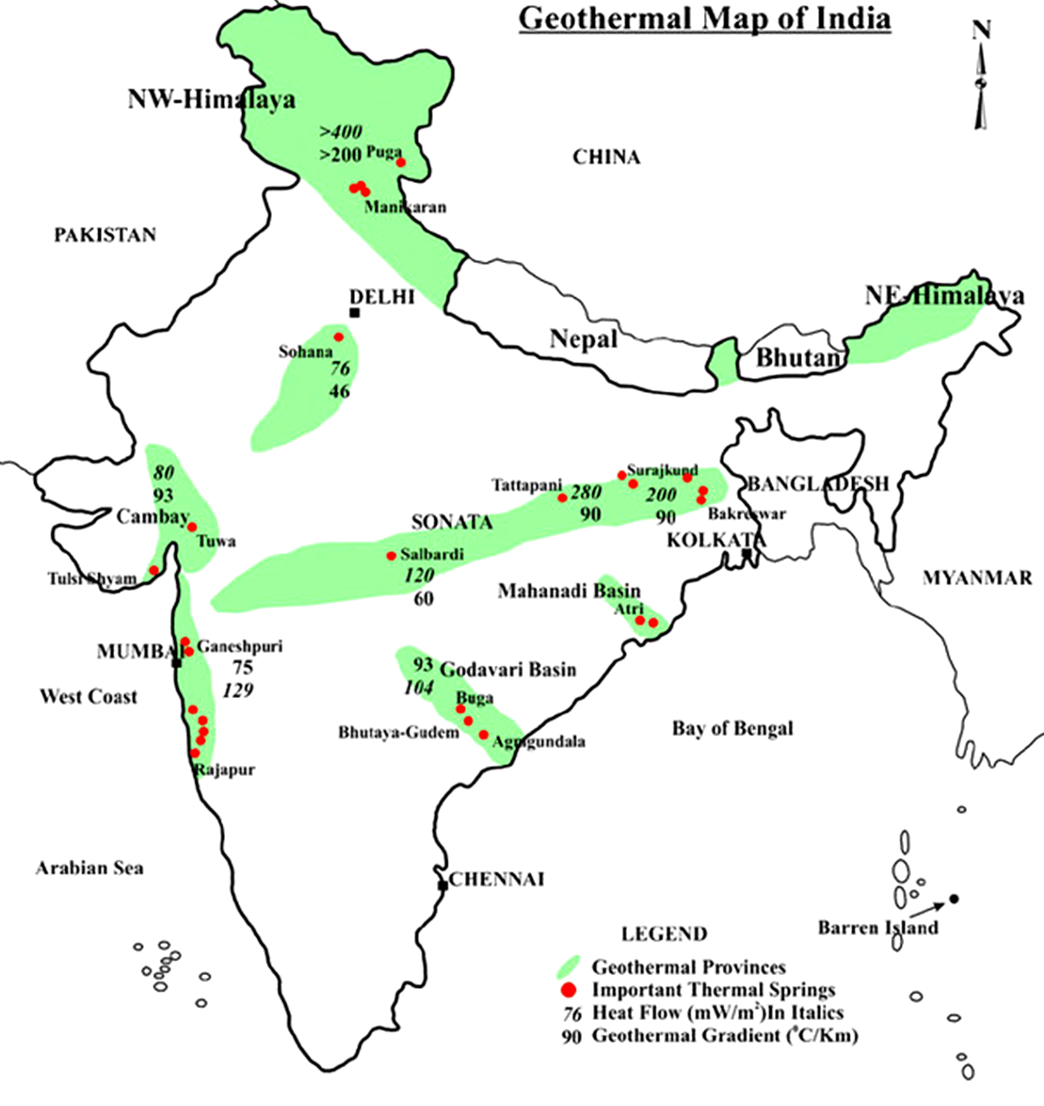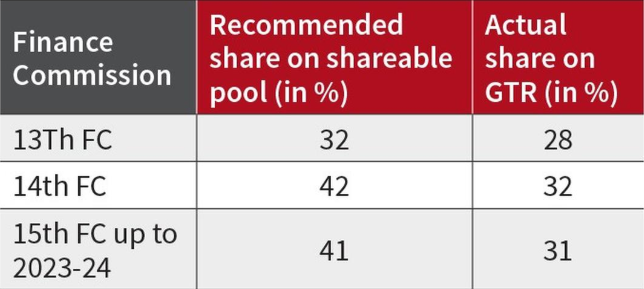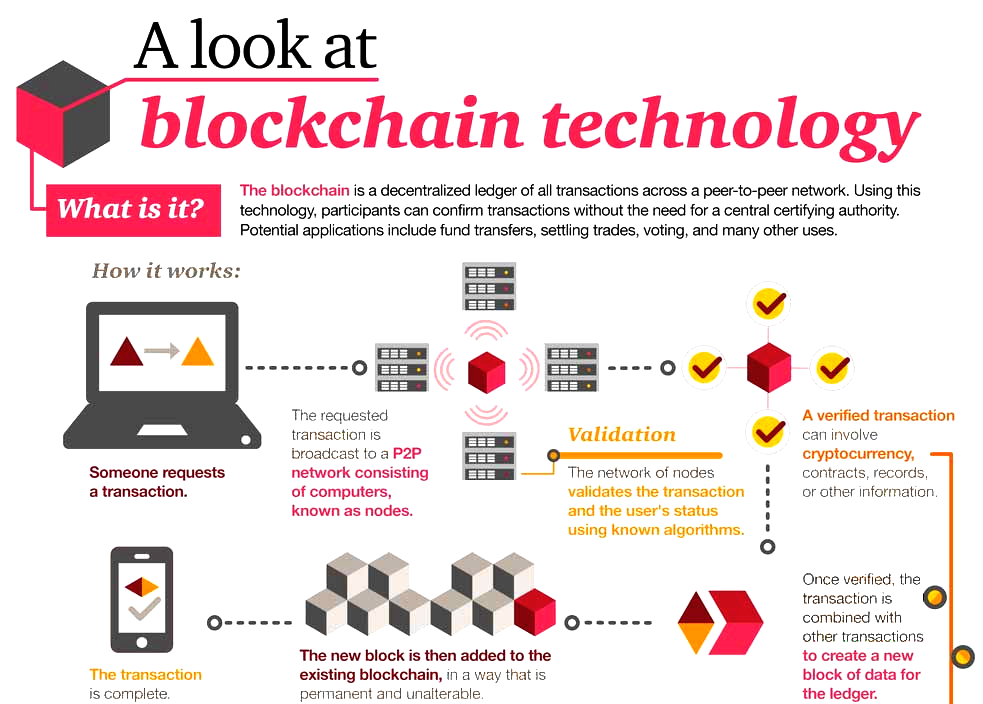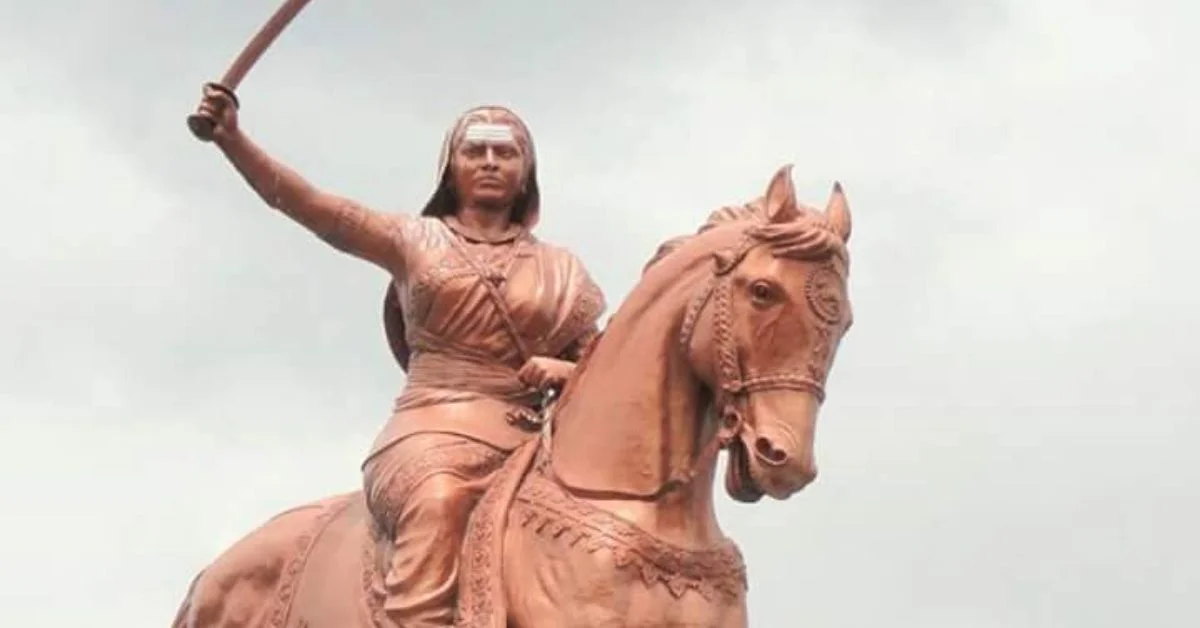Cloud Seeding in Delhi
For Prelims: Cloud seeding, Particulate matter, Indo-Gangetic Plain, India Meteorological Department
For Mains: Science and technology in environmental management, Urban air pollution and sustainable development in India
Why in News?
The Delhi government partnered with IIT-Kanpur to conduct cloud seeding experiments to combat rising post-monsoon air pollution.
- However, experts from the Ministry of Earth Sciences have cautioned that the absence of rain-bearing clouds during the post-monsoon season makes the timing scientifically unsuitable, casting doubt on the effectiveness of the initiative.
What is Cloud Seeding?
- About: Cloud seeding is a weather modification technique aimed at enhancing precipitation (rain or snow) from existing clouds.
- Mechanism: It involves dispersing substances such as silver iodide, potassium iodide, sodium chloride, or dry ice (solid CO₂) into clouds using aircraft.
- These particles act as cloud condensation nuclei (CCN) or ice nuclei (IN), mimicking the structure of ice and prompting supercooled water droplets in the clouds to freeze.
- As these ice crystals grow larger and heavier, they eventually coalesce and fall to the ground as rain or snow.
- Cloud seeding cannot create clouds, but works only when there are naturally formed clouds with sufficient moisture.
- Cloud Seeding in India & Across Globe: The India’s Ministry of Earth Sciences (MoES) has conducted several studies under the Cloud Aerosol Interaction and Precipitation Enhancement Experiment (CAIPEEX).
- These experiments, conducted in phases between 2009 and 2019, showed that rainfall could be increased by up to 46% under favourable conditions.
- States like Maharashtra, Karnataka, Andhra Pradesh, and Tamil Nadu have experimented with cloud seeding for drought relief.
- China extensively uses cloud seeding for weather control, especially before major events (e.g., 2008 Beijing Olympics).
- UAE and Saudi Arabia regularly use cloud seeding to tackle water scarcity.
- Applications of Cloud Seeding: Enhancing rainfall in drought-prone or arid regions.
- Reducing air pollution by washing out pollutants (as proposed in Delhi).
- Dispersing fog near airports or highways to improve visibility.
- Suppressing hailstorms or modifying weather for agricultural purposes.
What are the Limitations of Using Cloud Seeding to Curb Air Pollution?
- Lack of Rain-bearing Clouds: The India Meteorological Department (IMD) classifies October to December as the post-monsoon season, when monsoon clouds and low-pressure systems have already withdrawn.
- The atmosphere is mostly dry and stable, with limited vertical motion needed for cloud formation.
- Even when clouds are present, their composition, temperature, and moisture levels must be ideal for seeding. As cloud seeding only works on existing, moisture-laden ones.
- Dependence on Western Disturbances: During this period, any rainfall in North India typically comes from western disturbances (weather systems originating in the Mediterranean).
- These are infrequent and unpredictable, making it difficult to plan cloud seeding operations in advance.
- Limited and Temporary Impact: Any rain produced through seeding would offer only short-term relief from pollution by temporarily washing out particulate matter. The pollution levels would rise again once emissions continue.
- Environmental Risks: Chemicals like silver iodide used for seeding can accumulate in soil and water, though their long-term effects are still debated.
- Accountability Risks: If cloud seeding coincides with flooding or extreme rainfall, the public may blame the intervention, whether or not it’s responsible.
- There are no clear frameworks for accountability, making it hard to assign responsibility if harm occurs.
- Misallocation of resources: The absence of region-specific scientific data limits the effectiveness of cloud seeding, making it difficult to assess its results or justify the investment, while diverting funds from proven, evidence-based solutions.
What are the Persistent Causes of Air Pollution in Delhi?
- Vehicular Emissions: Delhi has over 1.2 crore registered vehicles, one of the highest in the country.
- Exhaust from petrol and diesel engines releases particulate matter (PM), nitrogen oxides, and carbon monoxide, which are major contributors to urban smog.
- Crop Residue Burning: Smoke from stubble burning in neighbouring Punjab and Haryana drifts into Delhi every winter, significantly increasing PM2.5 levels across the NCR region.
- Industrial and Construction Pollution: Continuous construction and demolition activities release large amounts of dust and suspended particles. Poor dust control measures worsen local air quality.
- Small- and medium-scale industries in and around Delhi, including in areas like Bawana and Wazirpur, often use dirty fuels such as coal, biomass, or furnace oil, adding to toxic emissions.
- Meteorological and Geographical Factors: During winter, weak winds, low temperatures, and temperature inversion trap pollutants near the surface.
- The city’s location in the Indo-Gangetic Plain further restricts air circulation, allowing pollutants to accumulate leading to increased pollution.
What are the Sustainable Solutions to Delhi’s Air Pollution Crisis?
- Emission Control: Enforce stricter vehicle norms and promote EVs under the Electric Mobility Promotion Scheme (EMPS) 2024 with better charging infrastructure and awareness drives.
- Industrial and Power Regulation: Strengthen monitoring under the National Clean Air Programme (NCAP), enforce strict Graded Response Action Plan, and phase out coal-based power plants near NCR.
- Waste Management: Ban open waste burning, improve segregation and recycling, and follow models like Surat's clean construction handbook and waste management strategy (led to reduction of open waste burning from 25% to 2% between 2015 and 2020) and Indore’s waste system for better results.
- Crop Residue Management: Promote Happy Seeder and subsidised Crop Residue Management (CRM) machines to discourage stubble burning and offer incentives for sustainable farming practices.
- Green Infrastructure: Expand urban forests, parks, and green belts to absorb pollutants and reduce heat and dust.
- Public Participation: Encourage citizens to carpool, cut waste, conserve energy, and follow air-quality advisories.
Conclusion
- Cloud seeding is a promising yet scientifically uncertain tool for weather modification. While it can supplement water management efforts or temporarily reduce pollution, it is not a substitute for structural environmental reforms.
For India, the priority should remain on sustainable water management, emission reduction, and clean energy adoption, rather than relying on short-term weather engineering solutions.
|
Drishti Mains Question: Q. Cloud seeding offers a temporary fix but not a solution to India’s air pollution crisis. Discuss |
Frequently Asked Questions (FAQs)
1. What is Cloud Seeding?
It is a weather modification technique that disperses substances like silver iodide, potassium iodide, sodium chloride, or dry ice into clouds to enhance precipitation.
2. What is the purpose of the Electric Mobility Promotion Scheme (EMPS) 2024?
To accelerate the adoption of electric vehicles (EVs) and reduce vehicular emissions contributing to urban air pollution.
3. What is the Happy Seeder machine used for?
It enables in-situ management of crop residue by sowing seeds directly into the soil without burning stubble.
4. What is the Graded Response Action Plan (GRAP)?
It is a set of emergency measures implemented in the Delhi-NCR region to control air pollution based on the severity of air quality levels.
UPSC Civil Services Examination, Previous Year Questions (PYQs)
Prelims
Q. Artificial way of causing rainfall to reduce air pollution makes use of
A. silver iodide and potassium iodide
B. silver nitrate and potassium iodide
C. silver iodide and potassium nitrate
D. silver nitrate and potassium chloride
Ans: A
Q. In the context of which of the following do some scientists suggest the use of cirrus cloud thinning technique and the injection of sulphate aerosol into the stratosphere? (2019)
(a) Creating the artificial rains in some regions
(b) Reducing the frequency and intensity of tropical cyclones
(c) Reducing the adverse effects of solar wind on the Earth
(d) Reducing the global warming
Ans: (d)
India's First National Policy on Geothermal Energy
For Prelims: Renewable Energy, Geothermal Power, 500-Gw Non-Fossil, Solar Power, Small Hydro Power, Biomass Energy, Grid Infrastructure, Green Hydrogen , Transmission Lines
For Mains: Significance of Boosting Renewable Energy Capacity, Significance of Geothermal Energy for India
Why in News?
The Ministry of New and Renewable Energy (MNRE) has launched India’s first National Policy on Geothermal Energy 2025, aiming to tap India’s vast but underutilized geothermal potential to advance the nation’s Net Zero 2070 commitment, ensure energy security, and diversify its renewable energy mix.
What are the Key Features of the National Geothermal Energy Policy 2025?
- Broad Scope of Application: The policy encompasses all major aspects of geothermal energy development including:
- Geothermal Resource Assessment
- Power Production Systems
- Direct-use Applications
- Ground (Geothermal) Source Heat Pumps (GSHP)
- Utilization of abandoned oil and gas wells for geothermal energy extraction is encouraged.
- Extraction of valuable mineral by-products like silica, borax, cesium, and lithium will be regulated under the Mines and Minerals (Development and Regulation) Act (MMDR Act),1957 with applicable royalties.
- Promotion of Emerging Tech: It also promotes emerging and innovative technologies such as:
- Enhanced Geothermal Systems (EGS)
- Advanced Geothermal Systems (AGS)
- Geothermal energy storage
- Offshore geothermal wells
- Geothermal Resource Data Repository: Establishment of a comprehensive geothermal resource data repository through inter-ministerial collaboration with agencies such as the Ministry of Mines, Ministry of Earth Sciences, Geological Survey of India (GSI), and National Data Repository (NDR).
- Permission for resource assessment surveys will be granted to developers for R&D and feasibility studies.
- Fiscal & Financial Support: Under the Renewable Energy Research and Technology Development Programme (RE-RTD):
- Up to 100% financial support for government and non-profit research institutions.
- Up to 70% support for private sector entities including start-ups and manufacturing units.
- Additional support mechanisms:
- Inclusion under the Indian Carbon Credit Trading Scheme.
- Waiver of open access charges.
- Eligibility under Renewable Purchase Obligations (RPOs).
- State-Level Guidelines: State/UT governments will have the authority to issue:
- Exploration leases (valid for 3–5 years)
- Development leases for power generation or direct-use (valid for up to 30 years)
- Establishment of a single-window clearance mechanism through designated state nodal agencies.
What is Geothermal Energy?
- About: Geothermal energy refers to the heat derived from the Earth’s interior, which can be used for heating buildings, and generating electricity.
- It is considered a renewable energy source because the Earth continuously produces heat within its core.
- India’s Geothermal Potential:
- India’s geothermal potential-spread across 381 hot springs and 10 geothermal provinces including Ladakh(Puga valley), Himachal Pradesh, Gujarat, Odisha, and Chhattisgarh.
- A potential of about 10,600 MW of geothermal power has been estimated in the country.
- Globally, geothermal energy contributes 15.4 GW (2019), led by the U.S., Indonesia, and the Philippines.
- Sources:
- Deep reservoirs: Hot water or steam found deep within the Earth is accessed through drilling.
- Surface reservoirs: Geothermal reservoirs located near the surface, especially in western U.S., Alaska, and Hawaii, are more easily accessible.
- Shallow ground: The shallow layers of the Earth maintain a constant temperature (50–60°F), which can be used for direct heating and cooling applications.
- Benefits:
- Renewable Source: With proper management, the rate of energy extraction can be balanced with the natural heat recharge rate of the reservoir.
- Continuous Supply: Geothermal power plants can operate 24×7, providing a consistent energy supply unaffected by weather conditions.
- Small Land Footprint: Geothermal plants occupy less land area per GWh compared to coal, solar, or wind energy installations.
- Less Water Consumption: Additionally, geothermal systems consume less water than most conventional energy sources.
- Disadvantages/issues of Geothermal Energy:
- If improperly harnessed, geothermal projects can lead to pollutant release.
- Incorrect drilling may release hazardous gases and minerals trapped deep inside the Earth.
- Higher capital costs, techno-economic viability issue due to remote location.
What is the Significance of the National Geothermal Energy Policy 2025?
- Facilitates baseload renewable power generation, reducing reliance on fossil fuels.
- The policy significantly boosts geothermal energy adoption by offering long-term concessional loans, Sovereign Green Bonds, and Viability Gap Funding (VGF), alongside fiscal incentives like GST/import duty exemptions and tax holidays, thereby enhancing project viability and attracting private investment.
- Supports remote Himalayan and Northeastern regions with clean heating and power.
- Encourages industrial decarbonization by reusing existing oil infrastructure.
- Strengthens India’s position in global renewable innovation alongside nations like Germany and Iceland.
- Complements national initiatives such as the National Green Hydrogen Mission and the RE-RTD Programme for renewable R&D.
|
Drishti Mains Question Q. Discuss the significance of India’s National Geothermal Energy Policy (2025) in advancing the country’s Net Zero 2070 goals and ensuring energy security. |
Frequently Asked Questions
Q. What is the main objective of India’s National Geothermal Energy Policy (2025)?
The policy aims to harness geothermal potential to achieve Net Zero 2070, enhance energy security, and diversify India’s renewable energy mix.
Q. Which sectors will benefit from the geothermal policy?
It covers electricity generation, heating/cooling for buildings, industrial use, agriculture, aquaculture, and tourism, making it a multi-sectoral renewable initiative.
Q. Why is geothermal energy important for India’s energy future?
Geothermal provides 24×7 baseload renewable power with low CO₂ emissions, and reduced fossil fuel dependence.
UPSC Previous Year Questions (PYQs)
Q. Consider the following: (2013)
- Electromagnetic radiation
- Geothermal energy
- Gravitational force
- Plate movements
- Rotation of the earth
- Revolution of the earth
Which of the above are responsible for bringing dynamic changes on the surface of the earth?
(a) 1, 2, 3 and 4 only
(b) 1, 3, 5 and 6 only
(c) 2, 4, 5 and 6 only
(d) 1, 2, 3, 4, 5 and 6
Ans: (d)
Mains
Q. Explain briefly the ecological and economic benefits of solar energy generation in India with suitable examples. (2025)
Q. How can India achieve energy independence through clean technology by 2047? How can biotechnology can play a crucial role in this endeavour? (2025)
Q. Examine the potential of wind energy in India and explain the reasons for their limited spatial spread. (2022)
Restoring Fiscal Power for the States
For Prelims: Goods and Services Tax (GST), GST Compensation Cess, Article 269A, GST Council, Article 275, Finance Commission, Seventh Schedule, Cesses and Surcharges, Centrally Sponsored Schemes.
For Mains: Key Challenges to Fiscal Federalism in India, especially after GST reforms, and Strategies to Address Them through Cooperative Federalism.
Why in News?
The Goods and Services Tax (GST) regime enters a new phase with restructured tax slabs and the abolition of the GST compensation cess, expected to transfer Rs 2 lakh crore in benefits to consumers and boost demand.
- However, several States have raised concerns over revenue losses and fiscal centralization, seeking a review of the tax-sharing framework to preserve cooperative federalism.
What are the Key Challenges in Centre-State Fiscal Relations?
- End of GST Compensation Cess: GST compensation cess, introduced to protect States from revenue losses (2017–22) and extended during the pandemic, is now abolished, which states argue disproportionately impacts those with low manufacturing capacity.
- Erosion of Fiscal Autonomy: The GST introduction shifted taxation power from state legislatures to the GST Council, where the Centre dominates, reducing states’ tax revenue autonomy.
- Skewed Revenue Sharing: Although the 14th Finance Commission raised the devolution share to 42% (later adjusted to 41%), actual transfers have declined in percentage terms of Gross Tax Revenue (GTR).
- Cess and Surcharge Mechanism: These are outside the divisible pool under Article 270. Cesses and surcharges constituted Rs 4.23 lakh crores in 2025–26, reducing the effective devolution to States.
- Heavy Dependency on Central Transfers: States rely on central transfers for about 44% of revenue, with some like Bihar up to 72%, weakening fiscal autonomy and causing liquidity issues.
- Vertical Fiscal Imbalance: A structural mismatch exists as resource-raising powers are centralized while expenditure responsibilities are decentralized.
- States bear 52% of expenditure but collect only 33% of tax revenue, creating a fiscal gap.
- Political and Administrative Frictions: The central transfer system, including Finance Commission grants and Centrally Sponsored Schemes (CSS), is perceived as lacking fairness and transparency, creating fears of political vendetta.
How does the Indian Constitution Regulate Central-State Fiscal Relations?
- Part XII (Articles 264–300A): It contains financial provisions including those related to taxation, definition of various Funds, the right to hold property, and borrowing by Union and State governments.
- Under Article 275, the central government can transfer funds to states for specific schemes or purposes to provide necessary financial support.
- Article 269A (GST): Article 269A states that GST on inter-state trade will be levied and collected by the central government and shared between the Union and States as determined by Parliament based on GST Council recommendations.
- Division of Taxation Powers: The Seventh Schedule of the Constitution defines taxation powers:
- Union List: Includes customs, income tax (except on agricultural income), excise on goods, corporate tax.
- State List: Includes taxes on agricultural income, land, buildings, and excise on alcohol.
- Concurrent List: Both can tax items in the Concurrent List.
- Finance Commission (Article 280): The Finance Commission advises the President on:
- Distribution of tax proceeds between Centre and states, and among states.
- Principles for grants-in-aid to states (Article 275).
- Measures to augment state funds for Panchayats and Municipalities.
- Other financial matters referred by the President.
What Measures can be Taken to Restore the Fiscal Autonomy of States?
- Reviewing Finance Commission Mandates: Ensure consistent application of devolution criteria and greater transparency in weights used.
- Consider performance-based incentives beyond income distance and population.
- Sharing Personal Income Tax (IT) Base: Adopt 50:50 sharing of the Personal Income Tax base between the Centre and State to help high tax base states benefit from economic growth and reduce central transfer dependence.
- Surcharge on Central Taxes: Allow states to levy a surcharge on central income tax to boost revenue-raising capacity and provide immediate fiscal relief.
- Strengthening Institutional Mechanism: Bring petroleum, real estate, and alcohol under the GST regime for a unified market and higher revenue.
- Strengthen the Inter-State Council under Article 263 for ongoing fiscal consultation and grievance redressal.
- Adopt International Models: India can consider Canada’s fiscal federalism model, where the federal government collects 46% of taxes and spends 40%, while sub-national governments collect 54% and spend 60%, providing greater financial autonomy and flexibility to states.
Conclusion
India's GST reforms boost growth but underscore the need to rebalance fiscal federalism. Restoring state autonomy requires increasing own-source revenues, rationalizing central schemes, and addressing vertical resource imbalances to uphold cooperative federalism.
|
Drishti Mains Question Q. Discuss the constitutional provisions governing financial relations between the Centre and the States. What measures can be adopted to enhance the fiscal autonomy of States in the spirit of cooperative federalism? |
Frequently Asked Questions (FAQs)
1. Which part of the Indian Constitution deals with Centre–State financial relations?
Part XII (Articles 264–300A) deals with financial matters, including taxation powers, grants, and borrowing authority between the Centre and States.
2. Which constitutional article establishes the mechanism for sharing GST revenues between the Centre and States?
Article 269A of the Indian Constitution provides that GST on inter-state trade is levied and collected by the Centre and shared based on the recommendations of the GST Council.
3. What constitutional body is responsible for recommending the distribution of tax proceeds between the Union and the States?
The Finance Commission, constituted under Article 280 of the Constitution, is mandated to recommend the distribution of tax proceeds.
UPSC Civil Services Examination, Previous Year Question (PYQ)
Prelims
Q. Which one of the following in Indian polity is an essential feature that indicates that it is federal in character? (2021)
(a) The independence of judiciary is safeguarded.
(b) The Union Legislature has elected representatives from constituent units.
(c) The Union Cabinet can have elected representatives from regional parties.
(d) The Fundamental Rights are enforceable by Courts of Law.
Ans: (a)
Mains
Q. How have the recommendations of the 14th Finance Commission of India enabled the States to improve their fiscal position? (2021)
Q. The concept of cooperative federalism has been increasingly emphasized in recent years. Highlight the drawbacks in the existing structure and the extent to which cooperative federalism would answer the shortcomings. (2015)
India's National Blockchain Framework
Why in News?
Blockchain technology has become a major digital innovation with the launch of the National Blockchain Framework (NBF) in September 2024 to enhance transparency, accountability, and efficiency in public services.
- As of October 2025, over 34 crore documents have been verified using blockchain technology.
What is the National Blockchain Framework (NBF)?
NBF
- It is India’s indigenous platform to boost blockchain-based public services, providing a unified architecture for secure, transparent, and scalable solutions across government sectors.
Core Components:
- NBF’s core components include Vishvasya Blockchain Stack, NBFLite, Praamaanik, and the National Blockchain Portal.
- Vishvasya Blockchain Stack: It is an indigenous, modular platform providing the technical foundation for developing and deploying blockchain-based governance applications. Its key features are:
- Blockchain-as-a-Service (BaaS): Offers shared blockchain infrastructure for easy application deployment by government entities.
- Distributed Infrastructure: Operates via National Informatics Centre (NIC) data centres in Bhubaneswar, Pune, and Hyderabad for scalability and resilience.
- Permissioned Layer: Ensures only verified participants can validate transactions.
- Open APIs: Provides application programming interface (APIs) and modules for authentication and data exchange.
- NBFLite: A sandbox version of the blockchain stack for startups, academia, and researchers to prototype applications in a controlled environment.
- Praamaanik: An innovative solution that uses blockchain to verify the authenticity and source of mobile applications, protecting users from fraud.
- National Blockchain Portal: A central platform outlining India’s strategic approach and supporting cross-sector adoption.
- Vishvasya Blockchain Stack: It is an indigenous, modular platform providing the technical foundation for developing and deploying blockchain-based governance applications. Its key features are:
NBF Transforming Digital Governance in India:
- Certificates and Document Chain: Securely stores academic documents and government certificates (caste, income etc), with over 34 crore documents verified through the platform.
- Logistics Chain: Tracks goods movement like Karnataka’s Aushada system, ensuring drug authenticity, enabling patient verification, and curbing spurious drugs.
- Judiciary and ICJS Chain: Provides a secure, immutable record of judicial data, enabling electronic delivery of summons and orders.
- The Inter-operable Criminal Justice System (ICJS) unifies the criminal justice ecosystem for case records, evidence, and judicial documents.
- Property Chain: Securely records property transactions, providing full ownership history, reducing litigation, and speeding up dispute resolution.
Blockchain
- About: Blockchain is a distributed, immutable, and transparent digital ledger that records transactions securely across multiple computers (nodes).
- It removes the need for intermediaries by enabling verifiable trust among participants.
- Features: Key features include decentralization, immutability, transparency, and security—all crucial for reliable governance systems.
Key Initiatives Promoting Blockchain Adoption in India
- National Strategy on Blockchain: The National Strategy on Blockchain by MeitY outlines India’s roadmap for blockchain development, addressing challenges and setting short- and long-term goals for its integration across sectors.
- Centre of Excellence (CoE) in Blockchain: NIC has set up a CoE to offer consultancy, training, and support for pilot blockchain projects before large-scale implementation.
- TRAI’s Role: Telecom Regulatory Authority of India (TRAI) has integrated Distributed Ledger Technology (DLT) to curb spam and fraud in SMS transmission.
- RBI’s Blockchain Initiatives: RBI conducted a pilot for Digital Rupee (e₹) in retail transactions to promote traceable, instant, and inclusive payment systems using blockchain.
- NSDL’s Adoption of Blockchain: National Securities Depositories Limited (NSDL) developed the Debenture Covenant Monitoring System to track asset charges and covenants on a tamper-proof ledger, boosting investor confidence.
How is India Building a Blockchain-Ready Workforce?
- Skill Development: Over 214 programs have trained 21,000+ government officials in emerging technologies including blockchain.
- Post Graduate Diploma in FinTech & Blockchain: Offers 900-hour training on blockchain, fintech, AI, cybersecurity, and regulatory frameworks.
- BLEND programme by C-DAC: Blockchain Technology and Application Development (BLEND) is an online course for engineering students and professionals to learn blockchain architecture and real-world applications.
- FutureSkills PRIME: MeitY-backed initiative for upskilling IT manpower in 10 emerging technologies including blockchain.
Conclusion
Aligned with Digital India and Aatmanirbhar Bharat, the National Blockchain Framework drives trust-based digital governance, uniting indigenous technology, regulation, and skills to make India a global blockchain leader.
|
Drishti Mains Question: Q. Discuss the significance of the National Blockchain Framework (NBF) in promoting trust-based digital governance in India. |
Frequently Asked Questions (FAQs)
1. What is the National Blockchain Framework (NBF)?
NBF is India’s indigenous blockchain platform that ensures secure, transparent, and scalable e-governance solutions across sectors.
2. What are the core components of NBF?
Vishvasya Blockchain Stack, NBFLite, Praamaanik, and the National Blockchain Portal are its four main components.
3. How is India developing blockchain skills?
Through programs like FutureSkills PRIME, BLEND, and Post Graduate Diploma in FinTech & Blockchain, over 21,000 officials have been trained in emerging technologies.
UPSC Civil Services Examination, Previous Year Question (PYQ)
Prelims
Q. With reference to “Blockchain Technology”, consider the following statements: (2020)
- It is a public ledger that everyone can inspect, but which no single user controls.
- The structure and design of blockchain is such that all the data in it are about cryptocurrency only.
- Applications that depend on basic features of blockchain can be developed without anybody’s permission.
Which of the statements given above is/are correct?
(a) 1 only
(b) 1 and 2 only
(c) 2 only
(d) 1 and 3 only
Ans: (d)
Q. In India, the term “Public Key Infrastructure” is used in the context of (2020)
(a) Digital security infrastructure
(b) Food security infrastructure
(c) Health care and education infrastructure
(d) Telecommunication and transportation infrastructure
Ans: (a)
Q. With reference to ‘Bitcoins’, sometimes seen in the news which of the following statements is/are correct? (2016)
- Bitcoins are tracked by the Central Banks of the countries.
- Anyone with a Bitcoin address can send and receive Bitcoins from anyone else with a Bitcoin address.
- Online payments can be sent without either side knowing the identity of the other.
Select the correct answer using the code given below:
(a) 1 and 2 only
(b) 2 and 3 only
(c) 3 only
(d) 1, 2 and 3
Ans: (b)
Mains
Q. Discuss how emerging technologies and globalisation contribute to money laundering. Elaborate measures to tackle the problem of money laundering both at national and international levels? (2020)
Q. What is Cryptocurrency? How does it affect global society? Has it been affecting Indian society also? (2019)
Rani Chennamma of Kittur
Why in News?
The Government of India marked 200 years of Rani Chennamma’s historic victory at Kittur (1824) with the release of a special Rs 200 commemorative coin celebrating her courage and leadership against British rule.
Who was Rani Chennamma?
- Early Life: Rani Chennamma was born on 23rd October 1778, in Kakati village (Belagavi district, Karnataka) to a Lingayat family.
- She was trained in horse riding, sword fighting, and archery from a young age.
- She married Raja Mallasarja of Kittur and later became queen after his death in 1816.
- Revolt of Kittur (1824): After her husband and son’s death, she adopted Shivalingappa as heir to the Kittur throne.
- The British East India Company refused to recognize the adoption, attempting to annex Kittur, an early instance of what later became the Doctrine of Lapse.
- Rani Chennamma refused to surrender and led an armed rebellion against British officer John Thackery, defeating him in the first battle.
- However, the British retaliated with a larger force under Colonel Deacon, captured the fort, and imprisoned her at Bailhongal Fort, where she died in 1829.
- Legacy: She is one of India’s earliest freedom fighters, preceding the Revolt of 1857 by over three decades.
- Rani Chennamma is revered as a symbol of courage, justice, and women-led resistance against colonial rule in Karnataka and beyond.
- Her story lives on through folk songs (Janapada), ballads, and theatre, along with the annual Kittur Rani Chennamma Utsav.
Doctrine of Lapse
- The Doctrine of Lapse, introduced by Governor-General Lord Dalhousie, allowed the British East India Company to annex any princely state under its control if the ruler was deemed incompetent or died without a male heir.
- As per this, any adopted son of the Indian ruler could not be proclaimed as heir to the kingdom.
- By applying the doctrine of lapse, Dalhousie annexed the States of Satara (1848 A.D.), Jaitpur, and Sambalpur (1849), Baghat (1850), Udaipur (1852), Jhansi (1853), and Nagpur (1854).
Frequently Asked Questions (FAQs):
1. Who was Rani Chennamma?
Rani Chennamma was the queen of Kittur in present-day Karnataka, known for leading the Kittur Revolt of 1824 against the British East India Company.
2. What triggered the Kittur Revolt of 1824?
The British refusal to recognize her adopted son Shivalingappa as heir to the Kittur throne led to the revolt—an early example of opposition to the Doctrine of Lapse.
3. Who introduced the Doctrine of Lapse and why?
Lord Dalhousie introduced the Doctrine of Lapse to annex states whose rulers died without a male heir, denying the right of adoption.
UPSC Civil Services Examination, Previous Year Questions (PYQs)
Prelims
Q. What was/were the object/objects of Queen Victoria’s Proclamation (1858)? (2014)
- To disclaim any intention to annex Indian States
- To place the Indian administration under the British Crown
- To regulate East India Company’s trade with India
Select the correct answer using the code given below:
(a) 1 and 2 only
(b) 2 only
(c) 1 and 3 only
(d) 1, 2 and 3
Ans: (a)
China’s Wildlife Diplomacy
- China’s “Wildlife Diplomacy” has entered a new phase, with the loan of golden snub-nosed monkeys(Rhinopithecus roxellana) to European zoos (in France and Belgium) under a 10‑year agreement.
- These monkeys, unique to central China, are being positioned as new “animal ambassadors” potentially a successor to China’s famous panda diplomacy.
- China’s long‑standing use of animals as tools of diplomacy established the precedent for wildlife‑based engagement.
- China’s Panda Diplomacy: It began in 1957 when China gifted pandas to the Soviet Union, later sending them to the US in 1972.
-
Over time, this evolved into long-term leasing arrangements linked to conservation and scientific research collaborations.
- These initiatives aim to strengthen scientific ties and enhance China’s global image through wildlife diplomacy amid geopolitical tensions.
-
- Lessons for India: India as a nation rich in biodiversity, India can examine the role of iconic species (e.g., Bengal tiger, Indian rhinoceros) in its cultural diplomacy and conservation partnerships.
- These monkeys, unique to central China, are being positioned as new “animal ambassadors” potentially a successor to China’s famous panda diplomacy.
Golden Snub-nosed Monkey
- It is a primate species native to the mountainous forests of central and southwestern China.
- Classified as Endangered by the IUCN, the golden snub-nosed monkey is known for its golden-orange fur, blue face, and thick coat adapted to cold climates.
-
It also holds deep cultural significance in Chinese art and folklore, including associations with the Monkey King from classical literature.
|
Read more: Malaysia's Orangutan Diplomacy |
Iceland
Iceland, once one of the last mosquito-free places on Earth, has recorded its first-ever mosquitoes after the country’s hottest spring on record, highlighting how global warming is altering ecosystems even in the coldest parts of the planet.
- Driven by global warming, Iceland is heating up four times faster than the Northern Hemisphere, with rising temperatures and humidity now creating ideal conditions for mosquito survival, and breeding.
- Mosquitoes are cold-blooded and thrive in warm, humid conditions between 10°C and 35°C, with peak activity when humidity exceeds 42%.
Iceland
- Iceland is a Nordic island country in the North Atlantic known as the "Land of Fire and Ice" for its glaciers and volcanoes. Its capital is Reykjavík, the world's northernmost capital city.
- Iceland's coastline meets the Greenland Sea (north), the Norwegian Sea ( east), and the Atlantic Ocean (south and west).
- The Denmark Strait separates Iceland from Greenland.
- Iceland is the only place to observe the Mid-Atlantic Ridge with its divergent volcanic and related earthquake dynamics of seafloor spreading.
- The Arctic fox is the only native land mammal on Iceland.
| Read more: Land of Fire and Ice: Iceland |
Yuge Yugeen Bharat National Museum
The first gallery of the Yuge Yugeen Bharat National Museum is expected to open by end-2026, the museum is set to become the largest in the world, replacing the existing National Museum.
Yuge Yugeen Bharat National Museum
- About: It is being developed by the Ministry of Culture as part of the Central Vista redevelopment project complementing initiatives like the PM Museum, National Archives Digitisation, and Cultural Mapping of India.
- It will be located in the North and South Block buildings of the Central Vista.
- It is themed on 5,000 years of Indian civilization, reflecting its perennial nature.
- Architecture and Design: Arcop Associates, led by principal architect Kulapat Yantrasast, has been chosen as the top bidder for design consultancy.
- Heritage Collection: It will feature rare objects from galleries nationwide and the existing collection of the current National Museum. E.g.,
- Indus Valley terracotta hourglass from Kalibangan (2500-1700 BC).
- Gupta-period sculptures (5th century).
- Chola bronzes (10th-11th centuries).
- International Collaboration: India and France are jointly developing the Yuge Yugeen Bharat National Museum, leveraging France’s expertise in museum design and management.
| Read More: UNESCO's Virtual Museum of Stolen Cultural Objects |



